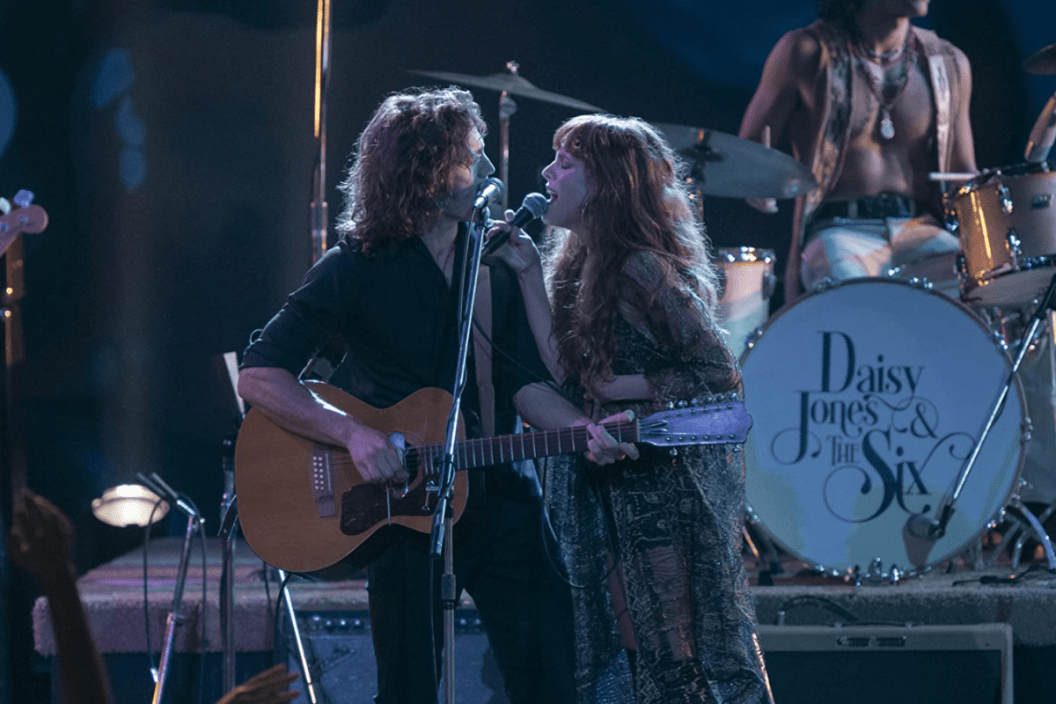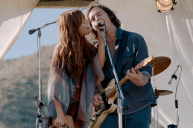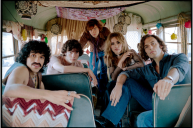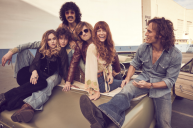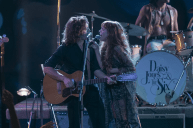There must have been nowhere more magical or influential to the 1970s rock 'n' roll music scene than Los Angeles. The famous Hollywood sign hanging on the hills above the city and the palm tree-lined roads seemed to be just as integral to rock 'n' roll as the music itself.
Landmarks such as Hollywood and the Sunset Strip have become the all-important background looming behind rock-inspired films such as Rocketman (2019) or Almost Famous (2000). And now, Los Angeles has once again become the legendary and enchanting setting for the latest Prime Video original series Daisy Jones & The Six.
Partly inspired by international rock band Fleetwood Mac's own journey through the music industry, the mockumentary follows a group led by Daisy Jones (Riley Keough) in the 1970s as they become the most famous band in the world. Based on Taylor Jenkins Reid's novel of the same name, the show explores how a rock 'n' roll band splits up at the height of its success.
Through the ups and downs of musical drama and intra-band disputes, the show also serves as a tour of some of LA's most well-known spots from rock history. The show was actually able to film at many of the recognizable nightclubs and music venues rather than being confined to sound stages and closed sets.
The crew also filmed a few scenes in New Orleans and in Greece, though the most crucial scenes were shot in LA. Here's a roundup of some of the incredible locations you can visit the next time you're in LA to experience the history of 1970s rock 'n' roll:
The Sunset Strip
This famous, 1.7-mile-long stretch of Sunset Boulevard — passing through Hollywood and West Hollywood — has been the illustrious center of music, culture and partying for more than a century. First home to LA gangsters in the 1920s, the Strip became the playground for members of Hollywood royalty for decades.
But the Strip is also known for starting and molding dozens of famous rock 'n' roll bands. Many of them first played together on a stage along the Strip. So its history made the Sunset Strip a crucial shooting location for Daisy Jones & The Six.
Production shut down a portion of the Strip for a week to transform the block into what it looked like during its peak in the 1970s. Many of the colorful billboards and flashy stores along the street were too modern for the time period, so the show's production team had to get creative to make it believable. The scenes shot on the re-created block make a number of appearances in the show, including when Jones is still a groupie and during the Six's first drive into LA.
Whisky A Go Go
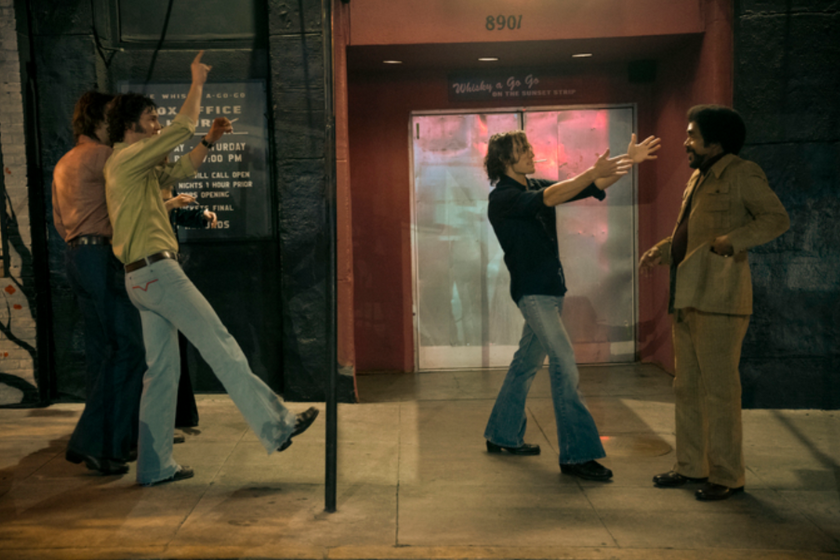
Lacey Terrell/Prime Video
The Whisky a Go Go is one of the most famous rock 'n' roll landmarks in the entire country or maybe even the world. It opened in the '60s as the first real American discothèque. It became an incubator for famous musicians and is credited for helping kick off the careers of such bands as the Doors, the Beach Boys, No Doubt, Alice Cooper and many others. That's why it was a crucial shooting location for the Daisy Jones & The Six production crew.
Luckily, the nightclub looks relatively similar to how it appeared in the '70s. The crew had to swap out some of the more-modern equipment for technology that existed 50 years ago, but much of the setting was left untouched.
A few of the scenes where The Six plays were filmed at the Whisky as well as a scene of Daisy playing the piano at the end of the first episode (though she was meant to be somewhere else). Stop by the iconic music venue anytime, as it's open 24 hours a day, seven days a week.
Riot House
What once was the major destination for rock stars in the '70s including Led Zeppelin and the Rolling Stones is now the Continental Hyatt House hotel on the Sunset Strip. Its rooftop pool, which supposedly Jimi Hendrix once jumped into, has remained intact.
That pool was also where a teenage Daisy appeared in the first episode. And reportedly the pool will also become the background to one of the season's romantic complications later on in the season.
You can book any of the hotel's 239 rooms in West Hollywood for your own taste of rock 'n' roll history.
The Troubador
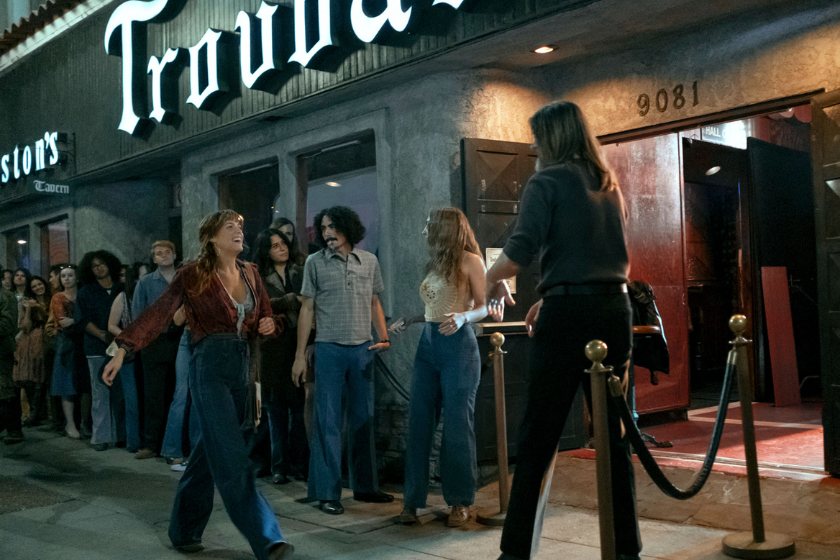
Lacey Terrell/Prime Video
Yet another iconic nightclub in the mix, The Troubador, provided the background for many scenes of The Six hanging out in the club's upstairs and several scenes of it performing in the show.
In real life, The Troubador made its name for many of the softer rock bands that found fame there. Carole King, The Eagles and James Taylor all played on The Troubador's stage, and it was also where Elton John first performed in America.
You can still catch talented bands playing at the West Hollywood venue nearly any day of the week.
Filthy McNasty's
In the show, The Six decides it need some consistency in its lives and takes an ongoing gig at the rock club Filthy McNasty's.
Now called the Viper Room, Filthy McNasty's was at the center of the famed Sunset Strip in the '70s. It was frequented by daredevil Evel Knievel and musician Tom Waits for years and was even featured behind the band The Sweet on the cover of its 1975 album, Desolation Boulevard. The bar also hosted musicians such as Mick Jagger and Elvis Presley, who is actually Keough's grandfather.
Visit the Viper Room for some fun performances or delicious drinks any night.
Sound City Studios
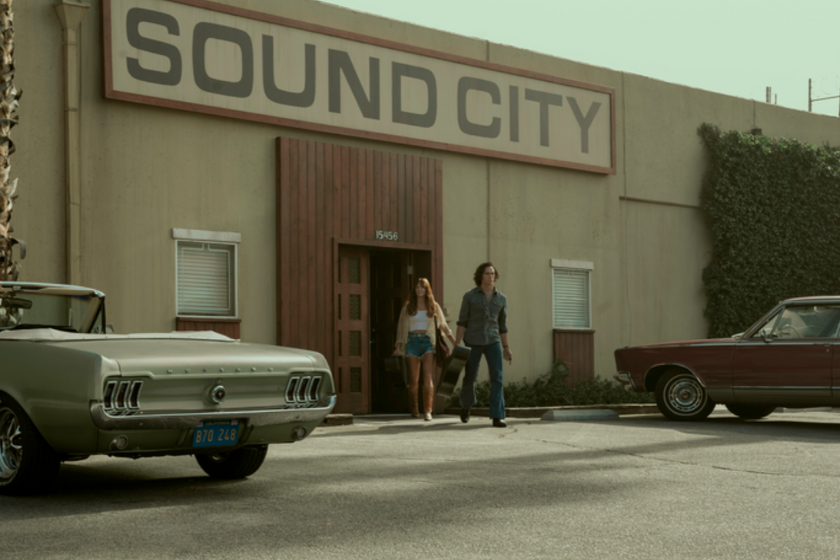
Lacey Terrell/Prime Video
Founded in 1969, Sound City Studios was the actual birthplace of so many of rock 'n' roll's greatest songs and albums. Neil Young, Elton John, Bob Dylan and Nirvana recorded much of their discographies there. It was even where Mick Fleetwood famously discovered Lindsey Buckingham and Stevie Nicks, and where the band eventually recorded its most famous album, Rumours.
So, naturally, Sound City was the perfect spot for The Six to create its multi-platinum album, Aurora, in the show. All of episodes 5 and 6 were shot at the actual studio along with the scene of Daisy recording the song "Look At Us Now."
Show co-creator Scott Neustadter told Entertainment Weekly that re-creating Sound City to look the way it did in the '70s was production's biggest undertaking. They filmed there for a month but had to completely redo much of the studio within the real studio to revert it back 50 years ago. Luckily, there were photographs from back then, and the crew was able to build a more authentic look.
"Shooting it in those spaces, you feel the ghosts of those who were before you, and everybody played off of it in a really nice way," Neustadter said. "[The cast] got something extra, something spiritual going on that made everybody so appreciate that we weren't at a Paramount soundstage."
The co-creator said the owners of Sound City liked some of the historical additions so much that they asked the crew to leave them.
Though you can't visit the famed studio unless you're recording an album, you can walk past the outside in the Van Nuys neighborhood of LA.
READ MORE: Elvis' Granddaughter Riley Keough Reflects on Singing Publicly for the First Time for 'Daisy Jones & the Six'
